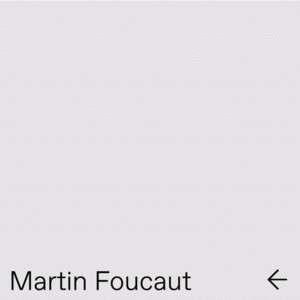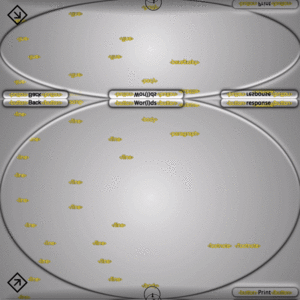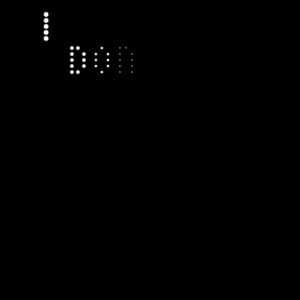User:Martin: Difference between revisions
| Line 20: | Line 20: | ||
==<p style="font-family:helvetica">Special Issue 14</b> == | ==<p style="font-family:helvetica">Special Issue 14</b> == | ||
[[File:INTRO2.gif|300px|thumb|right|Special Issue 14 communication draft]] | [[File:INTRO2.gif|300px|thumb|right|Special Issue 14 communication draft]] | ||
===[[SPECIAL_ISSUE_14_MARTIN_DAILY_BOARD|RESEARCH BOARD]] + LAUNCHER + FOLDER INTERFACES + VISUAL IDENTITY=== | ===[[SPECIAL_ISSUE_14_MARTIN_DAILY_BOARD|RESEARCH BOARD]] + [https://issue.xpub.nl/14/index.html LAUNCHER] + [https://hub.xpub.nl/sandbot/PrototypingTimes/HOTSPOTS/1%20PNF/index.html FOLDER INTERFACES] <br>+ [[SPECIAL_ISSUE_14_MARTIN_BOARD#Communication|VISUAL IDENTITY]]=== | ||
<br><br> | <br><br> | ||
For the Special Issue 14, I wished to explore, detect, and implement unconsidered Web events and situations in my own pinball game. Later on, this work evolved into a city-based pinball game, eventually becoming the publication’s launcher page. This launcher page allows the user to find coordinates of local Wi-Fi networks located within the city of The Hague. | For the Special Issue 14, I wished to explore, detect, and implement unconsidered Web events and situations in my own pinball game. Later on, this work evolved into a city-based pinball game, eventually becoming the publication’s launcher page. This launcher page allows the user to find coordinates of local Wi-Fi networks located within the city of The Hague. | ||
Revision as of 20:39, 11 April 2021

Special Issues
Special Issue 13
RESEARCH BOARD + TENSE + VISUAL IDENTITY
For the Special Issue 13, I interpreted the essay TENSE (2018) by Simon(e) van Saarloos. With my interpretation, I amplified the author’s discourse on descriptive language by exaggerating the use of meta-descriptions through the form of HTML-tags. Normally, a HTML <tag> acts as a descriptive container, it is invisible for Web-user point of view as it is only made to be read and interpreted by the computer in order to arrange the structure of the Web-page
By looking for ways to make these meta tags visible and readable from a Web-user’s point of view, I affect the reader’s interpreation of the essay and also perception of the document accessed. Additionally to the Web, I made my three HTML documents (essay, artistic response and map) printable from the Web and included them in the Special Issue 13 book.
As part of the design team of the Special Issue 13, I collaborated with two XPUB1 students to make the project’s visual identity, including the making of Web-to-print documents such as the blank map; bookcover and colophon.
Special Issue 14
RESEARCH BOARD + LAUNCHER + FOLDER INTERFACES
+ VISUAL IDENTITY
For the Special Issue 14, I wished to explore, detect, and implement unconsidered Web events and situations in my own pinball game. Later on, this work evolved into a city-based pinball game, eventually becoming the publication’s launcher page. This launcher page allows the user to find coordinates of local Wi-Fi networks located within the city of The Hague.
In addition to the launcher, I created a series of pinball inspired folder interfaces. Each of them allow visitors, who are connected to one of the local Wi-Fi network locations, to access content created and shared by XPUB1 students. This content can be games, texts or codes embedded within compositions of clickable pinball bumpers.
In order to connect the launcher page with a total of five folder interfaces as part of a more unified navigation and visual system, I was working in the design team of the Special Issue 14 with three other students and together we assembled the project’s visual identity.
Reading Notes (based on personal interests/research)
Books
→ 1. L'art comme expérience — John Dewey (french) (yet to be filled)
publisher: Gallimard (1934)
→ 2. L'œuvre d'art à l'époque de sa reproductibilité technique — Walter Benjamin (french
publisher: Alia (1939)
→ 3. La Galaxie Gutemberg — Marshall McLuhan (french)
publisher: University of Toronto Press (1962)
→ 3. Pour comprendre les médias — Marshall McLuhan (french)
publisher: McGraw-Hill Education (1964)
→ 4. Dispositif — Jean-Louis Baudry (french)
publisher: Raymond Bellour, Thierry Kuntzel et Christian Metz (1975)
→ 5. L’Originalité de l’avant-garde et autres mythes modernistes — Rosalind Krauss (french) (yet to be filled)
publisher: Macula (1993)
→ 6. L'art de l'observateur: vision et modernité au XIXe siècle — Jonathan Crary (french)
publisher: Jacqueline Chambon (Editions) (1994)
→ 7. Inside the White Cube, the Ideology of Gallery Space — Brian O'Doherty (english) (yet to be filled)
publisher: Les presses du réel (2008)
→ 8. Préçis de sémiotique générale — Jean-Marie Klinkenbeg (french) (yet to be filled)
publisher: Point (2000)
→ 9. Langage des nouveaux médias — Lev Manovitch (french) (yet to be filled)
publisher: Presses du Réel (2001)
→ 10. L'empire cybernétique — Cécile Lafontaine (french)
publisher: Seuil (2004)
→ 11. La relation comme forme — Jean Louis Boissier (french)
publisher: Genève, MAMCO(2004)
→ 12. Le Net Art au musée — Anne Laforêt (french)
publisher: Questions Théoriques(2011)
→ 13. Narrative comprehension and Film communication — Edward Branigan (english)
publisher: Routledge (2013)
→ 14. Statement and counter statement / Notes on experimental Jetset — Experimental Jetset (english)
publisher: Roma (2015)
→ 15. Post Digital Print — Alessandro Ludovico (french) ≈
publisher: B42 (2016)
→ 16. L'écran comme mobile — Jean Louis Boissier (french)
publisher: Presses du réel (2016)
→ 17. Design tactile — Josh Clark (french)
publisher: Eyrolles (2016)
→ 18. Espaces de l'œuvre, espaces de l'exposition — Pamela Bianchi (french)
publisher: Eyrolles (2016)
→ 19. Imprimer le monde (french)
publisher: Éditions HYX et les Éditions du Centre Pompidou (2017)
→ 20. Version 0 - Notes sur le livre numérique (french)
publisher: ECRIDIL (2018)
Articles
→ 1. Frederick Kiesler — artiste- architecte (yet to be filled)
(communiqué de presse)
Centre pompidou; source : centrepompidou.fr (1996)
→ 2. Oublier l'exposition (yet to be filled)
Artpress special numéro 21 (2000)
→ 3. Composer avec l’imprévisible: Le questionnaire sur les médias variables (yet to be filled)
Jon Ippolito; source : variablemedia.net/pdf/Permanence (2003)
→ 4. Esthétique du numérique : rupture et continuité
Fred Forest; source : archives.icom.museum (2010)
→ 5. La narration interactive (yet to be filled)
Dragana Trgovčević source : ensci.com/file_intranet/mastere_ctc/etude_Dragana_Trgovcevic.pdf (2011)
→ 6. Des dispositifs aux appareils - L'Espacement d'un calcul
Anthony Masure source : anthonymasure.com (2013)
To read
→ 1. Joost Rekveld 2007, Mental Spaces, viewed 15 October 2018, <http://www.joostrekveld.net/wp/?page_id=590>
→ 2. Kluitenberg, Eric, ed. Book of imaginary media. Excavating the dream of the ultimate communication medium. Rotterdam: NAi Publishers, 2006.
References (based on personal interests/research)
About questioning the exhibition space
→ Prouns Spaces — El lissitzky (1920)
→ City in Space — Frederick Kiesler (1920)
→ The air conditionning Show — Terry Atkinson & Michael Baldwin(1966-67)
→ Sans titre — Michael Asher (1973)
→ Serra Corner prop n°7 (for Nathalie) Richard Serra (1983)
About nothingness
→ 4’’33’ — John Cage (1952)
→ Untitled - A Curse — Tom Friedman (1965)
→ The air conditionning Show — Terry Atkinson & Michael Baldwin(1966-67)
→ Sans titre — Michael Asher (1973)
About enhancing the media
→ 4’’33’ — John Cage (1952)
→ TV Garden — Nam June Paik (1974)
→ Presents — Michael Snow (soon to be translated)
→ Lost Formats Preservation Society — Experimental Jetset (2000)
→ Lost Formats Winterthur — Experimental Jetset (2000)
About flags
→ Netflag — Mark Napier (2002)
→ 019 - Flag show (2015)
About the Internet points of view
→ What you see is what you get — Jonas Lund (2012)
About media time
→ Present Continuous Past — Dan Graham's (1974)
About interactive cinema
→ KINOAUTOMAT — Radúz Činčera (1967)
About interactive music
→ DIMI Ballet — Erkki Kurenniemi (1971)
About experimental cinema
→ Presents — Michael Snow (soon to be translated)
→ Displacements — Michael Naimark (1980)
→ BE NOW HERE — Michael Naimark (1995)
About unusual Web interfaces
→ http://eliaskurth.net/projects/broken-spaces-are-more-likely
→ https://iad-lab.ch/
→ https://www.powerhouse-company.com/
→ https://nonymous.com/
→ https://www.samyrio.fr/
→ https://noplans.show/
→ https://springkids.gucci.com/
→ http://www.danielsannwald.com/
→ https://neuhaus.world/
→ https://carolinedussuel.com/
→ http://www.wir-publizieren.ch/
→ http://www.jayapelupessy.com/
→ http://differentrecordings.com/
→ http://www.maximilienpellegrini.com/
→ https://www.thomasdemonaco.com/
→ http://dexternavy.com/
→ http://act.mit.edu/cavs
→ http://torquetorque.net/
→ https://lewonder.com/
→ https://data-orbit.ch/
→ https://thexx.info/home/
→ https://uncannyvalley.studio/
Personal Works (Media Art)
→ 1. Incidences Médiatiques — Martin Foucaut (2018)
→ 2. Media Spaces — Martin Foucaut (2019)




